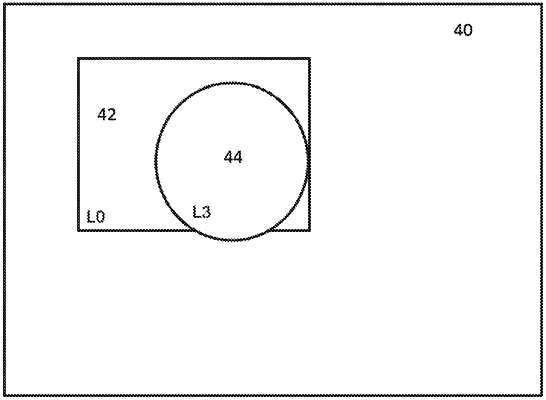| CPC G06F 3/04842 (2013.01) [G06F 3/0481 (2013.01); G06T 1/60 (2013.01); G06T 11/00 (2013.01); G06V 10/945 (2022.01); G06T 2200/24 (2013.01)] | 21 Claims |

|
1. A computer-implemented method of rendering an interface of an object-oriented environment, including the steps of:
allocating a buffer in memory for storing interface image data, the buffer providing a data structure defining a quantised image space for visible object image data;
generating a set of multiple objects within the environment, each object being associated with a layer representing the depth of the object within the environment, the layer being one of an ordered set of layers ranging from a foreground layer to a background layer;
maintaining the set of objects, in response to receiving a user input, by performing at least one of: adding or removing an object, adding or removing a layer and any object associated with the layer, changing the layer associated with an object, or changing the order of the layers;
iteratively updating the buffer to create image data, by incrementally selecting each one of the multiple layers in turn, as the current layer, from the set of layers, starting with the foreground layer and ending with the background layer, and, for each object associated with the current layer:
determining object image data representing the space the object occupies within the interface,
comparing the object image data to the interface image data stored in the buffer,
determining visible object image data from the object image data, in which portions of the object image data that are obscured by one or more objects in a previous layer are excluded from the visible object image data, and
updating the interface image data stored in the buffer by rendering the visible object image data; and
outputting the buffer containing interface image data.
|